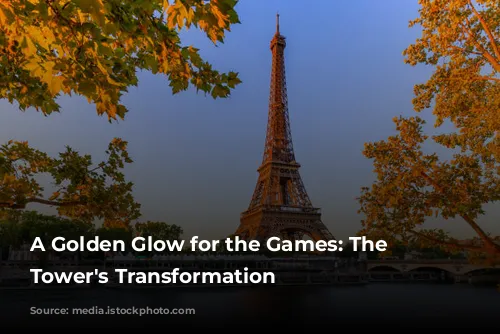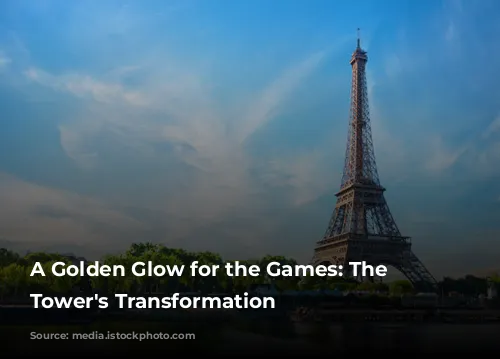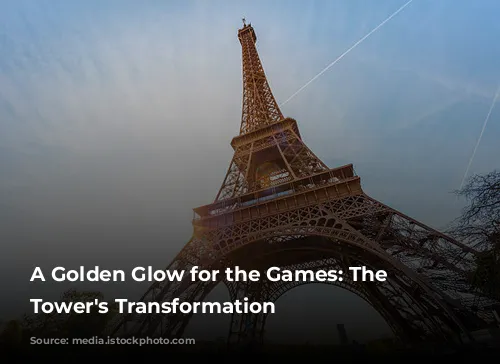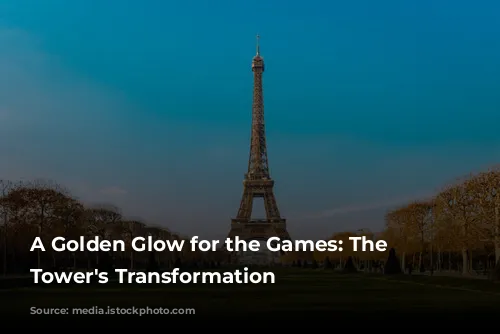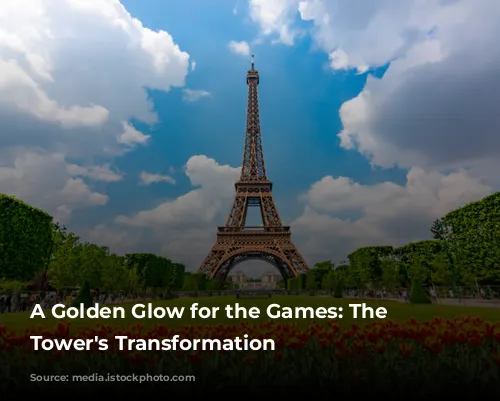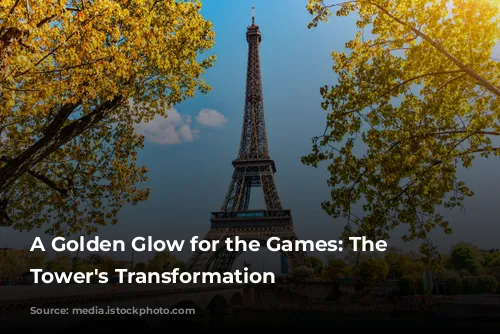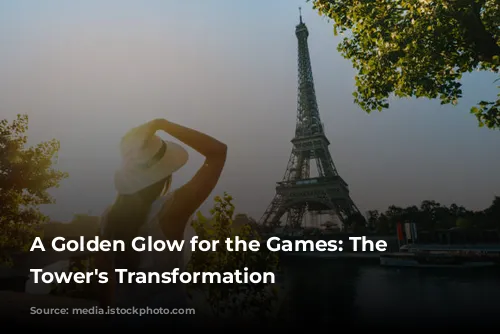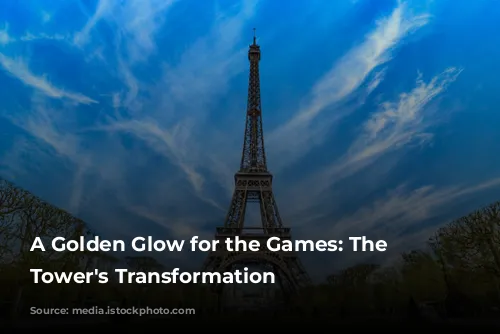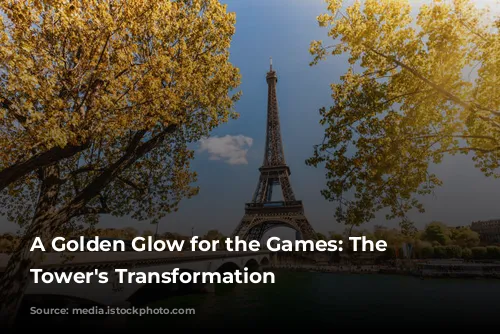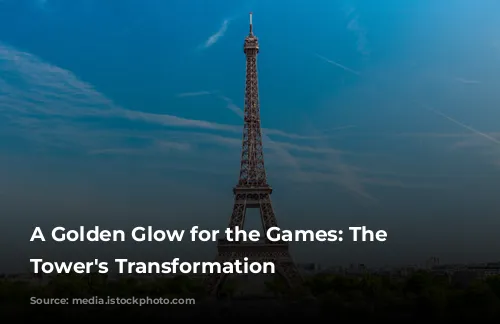The Eiffel Tower, a symbol of Paris, is undergoing a remarkable makeover in preparation for the 2024 Olympic Games. This iconic structure is being partially repainted in a golden hue, reminiscent of its early 20th-century splendor.
A Golden Touch for the Games
As early as 2017, the Eiffel Tower donned the Olympic colors, signaling Paris’s bid to host the 2024 Games. Simultaneously, the monument embarked on a major renovation, coinciding with its 132nd birthday. This extensive restoration aimed to return the Eiffel Tower to its original “yellow-brown” shade, giving it a golden sheen.
Patrick Branco Ruivo, Managing Director of Sete, the tower’s operating company, expressed his excitement about the new look. “The Eiffel Tower will have a slightly more gilded appearance for the Olympics, unlike its usual color,” he declared. This subtle change, visible primarily in the top portion of the tower, becomes particularly striking against a clear Parisian sky, revealing a metallic and lustrous glow.
Delays and Discoveries
The repainting process, which commenced in 2019, has been considerably delayed. The COVID-19 pandemic, along with the discovery of high levels of lead in previous layers of paint, significantly disrupted the project. This delay means the Eiffel Tower will not be fully restored to its original golden color by the 2024 Games. Only selected sections will receive the golden treatment, marking a partial return to its historical splendor.
A Colorful History
Throughout its existence, the Eiffel Tower has showcased seven distinctive shades, contributing to its captivating allure and enduring legacy. In 1887-1888, during its construction, Gustave Eiffel, the tower’s architect, initially chose a vibrant “Venice red” – a color meticulously crafted for this Italian city during the Middle Ages.
A Symphony of Hues
However, just two months after its completion in May 1889, the Eiffel Tower underwent its first recoloring, replacing the Venice red with a reddish-brown hue. Three years later, in 1892, the tower received its first major renovation, donning an ochre-brown color that it proudly displayed for seven years.
The 1900 Universal Exhibition brought another transformation. The Eiffel Tower was painted with brown ochre, featuring a gradient effect, transitioning from a vibrant orange at the base to a lighter yellow at the top. This shift marked the beginning of seven-year repainting cycles, ensuring the Tower’s regular maintenance.
A Defining Moment
The year 1907 marked a pivotal moment in the history of the Eiffel Tower. At Gustave Eiffel’s request, the tower received a lighter yellow-brown tint, a color that endured for over a century, right up to 2022, in anticipation of the 2024 Olympic and Paralympic Games in Paris.
A Touch of Red and the “Eiffel Tower Brown”
In 1954, the tower was painted a reddish-brown hue, distinct from its earlier iteration. This change coincided with the installation of a lighthouse at the summit two years prior, further solidifying the Eiffel Tower’s iconic status within the Paris skyline.
Finally, in 1968, the 324-meter-high tower embraced its most recognizable color – the famous “Eiffel Tower brown.” This specially formulated hue cemented the Eiffel Tower’s place as an irreplaceable landmark.
A Symbol of Paris
The Eiffel Tower, adorned with its golden glow, is set to stand as a testament to Paris’s rich history and unwavering spirit. This iconic landmark will continue to enchant visitors and residents alike, showcasing its captivating charm and enduring legacy, making it a symbol of resilience and beauty in the heart of Paris.

